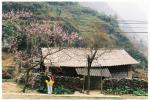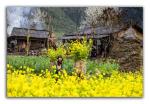Ha Giang, the northernmost province of Vietnam, is a dream destination for those who love majestic mountains, winding passes, and unique ethnic cultures. But what is the best season to travel to Ha Giang? This guide will walk you through Ha Giang’s climate, seasonal highlights, and tips so you can plan the perfect trip.
Recommended Tours for You:
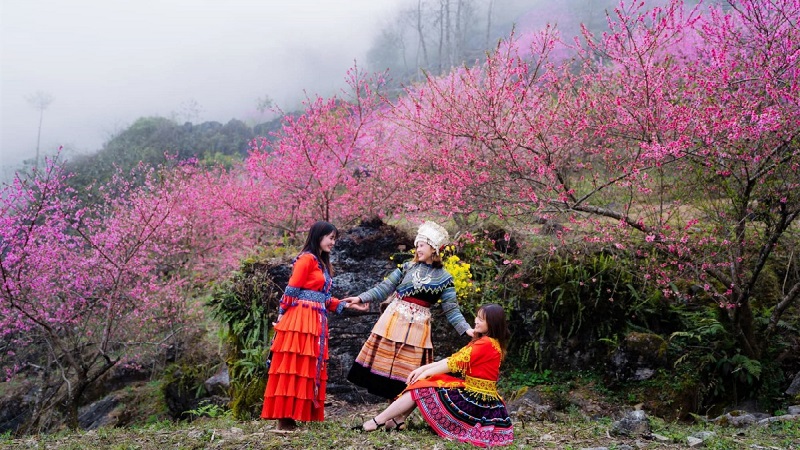
Ha Giang Weather Overview
Ha Giang experiences a tropical monsoon climate with four distinct seasons: spring, summer, autumn, and winter.
-
Spring (Feb – Apr): Cool, mild, flowers blooming.
-
Summer (May – Aug): Green landscapes, occasional rain, refreshing in high altitudes.
-
Autumn (Sep – Nov): Mild, dry, perfect for sightseeing.
-
Winter (Dec – Jan): Cold, sometimes foggy, with stunning flower seasons.
Because of its mountainous location, Ha Giang’s summers are cooler than lowlands, while winters are significantly colder.
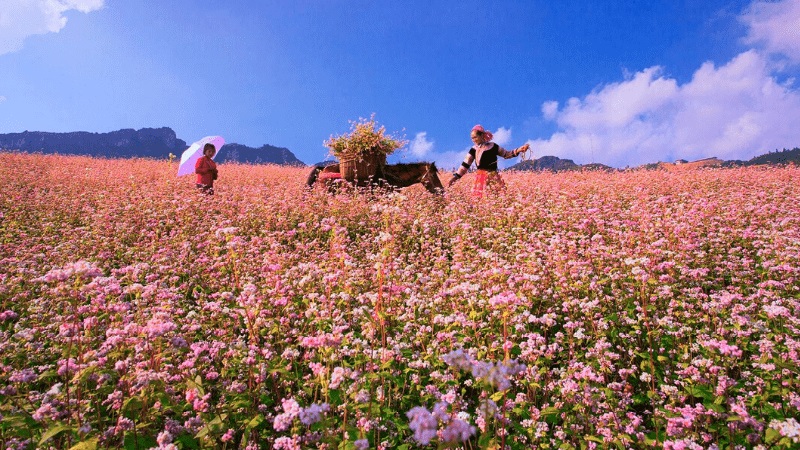
Spring in Ha Giang (February – April)
Spring offers cool and pleasant weather, perfect for outdoor exploration.
-
Highlights:
-
Peach & plum blossoms across villages.
-
Cultural festivals such as the Khau Vai Love Market in April.
-
-
Best for: Photographers, culture lovers, and those who enjoy mild climates.
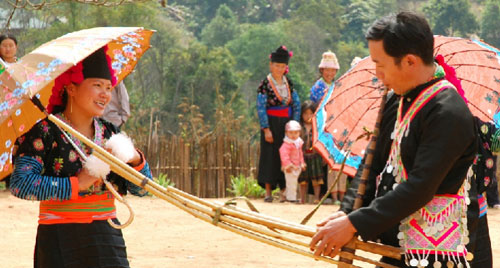
Summer in Ha Giang (May – August)
Summer brings lush greenery and a unique “water pouring season” on terraced fields.
-
Highlights:
-
Terraces shimmering with water in May–June.
-
Trekking, motorbiking, and adventure sports.
-
-
Best for: Adventure seekers and those who prefer fewer crowds
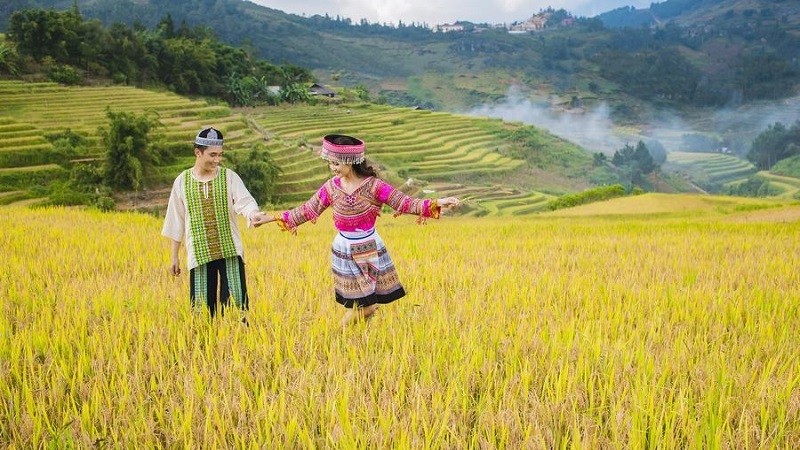
Autumn in Ha Giang (September – November)
Many consider autumn the best season to travel to Ha Giang.
-
Highlights:
-
Golden rice terraces in September–October.
-
Buckwheat Flower Festival in November with pink and purple blooms.
-
-
Best for: All types of travelers — great weather, iconic scenery, cultural events.
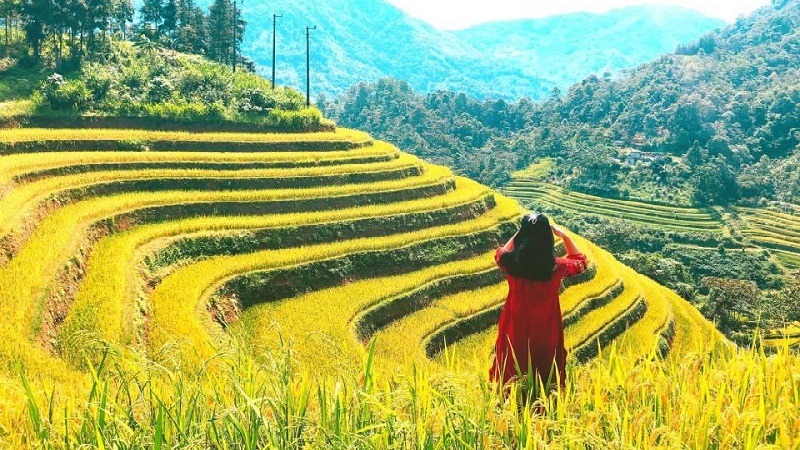
Winter in Ha Giang (December – January)
Winter offers a mysterious charm with misty mornings and vibrant flower fields.
-
Highlights:
-
Purple buckwheat flowers (Oct–Nov).
-
Golden mustard flowers in December.
-
-
Best for: Travelers who enjoy cold weather and atmospheric landscapes.
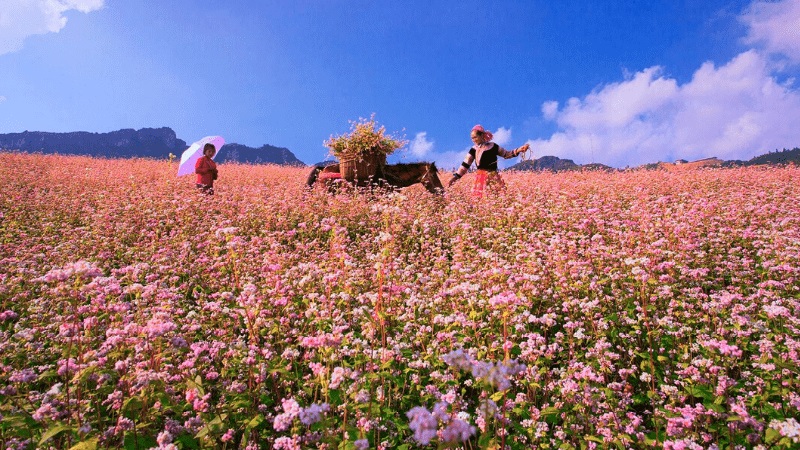
Budget Travel Tips
-
Peak season: March–May and September–November — higher costs for hotels and services.
-
Off-season: Better rates, but weather may be less predictable.
-
Book early if traveling during festivals or harvest season.
Travel Tips for Ha Giang
-
Check weather forecasts to avoid heavy rain or fog.
-
Bring layered clothing — temperatures vary greatly between day and night.
-
Carry insect repellent during summer and rainy months.
- Respect local customs and ask before taking photos in villages.
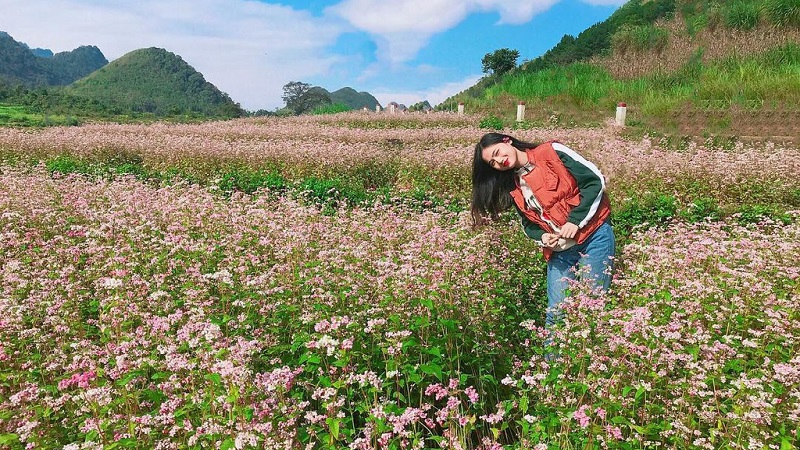
Must-Visit Attractions
-
Dong Van Karst Plateau: UNESCO-listed site with stunning rock formations.
-
Ma Pi Leng Pass: One of Vietnam’s most breathtaking mountain passes.
-
Hoang Su Phi Terraces: Among the most beautiful rice terraces in Vietnam.
Conclusion: What is the best season to travel to Ha Giang?
-
For golden rice terraces → September–October.
-
For buckwheat flowers → November.
-
For blossoms & festivals → February–April.
No matter when you visit, Ha Giang offers unforgettable scenery and culture. Each season paints a different picture, making every trip a unique experience. Plan your adventure today! For more details and personalized support, contact Thelooptours Hotline: +84329196074.




